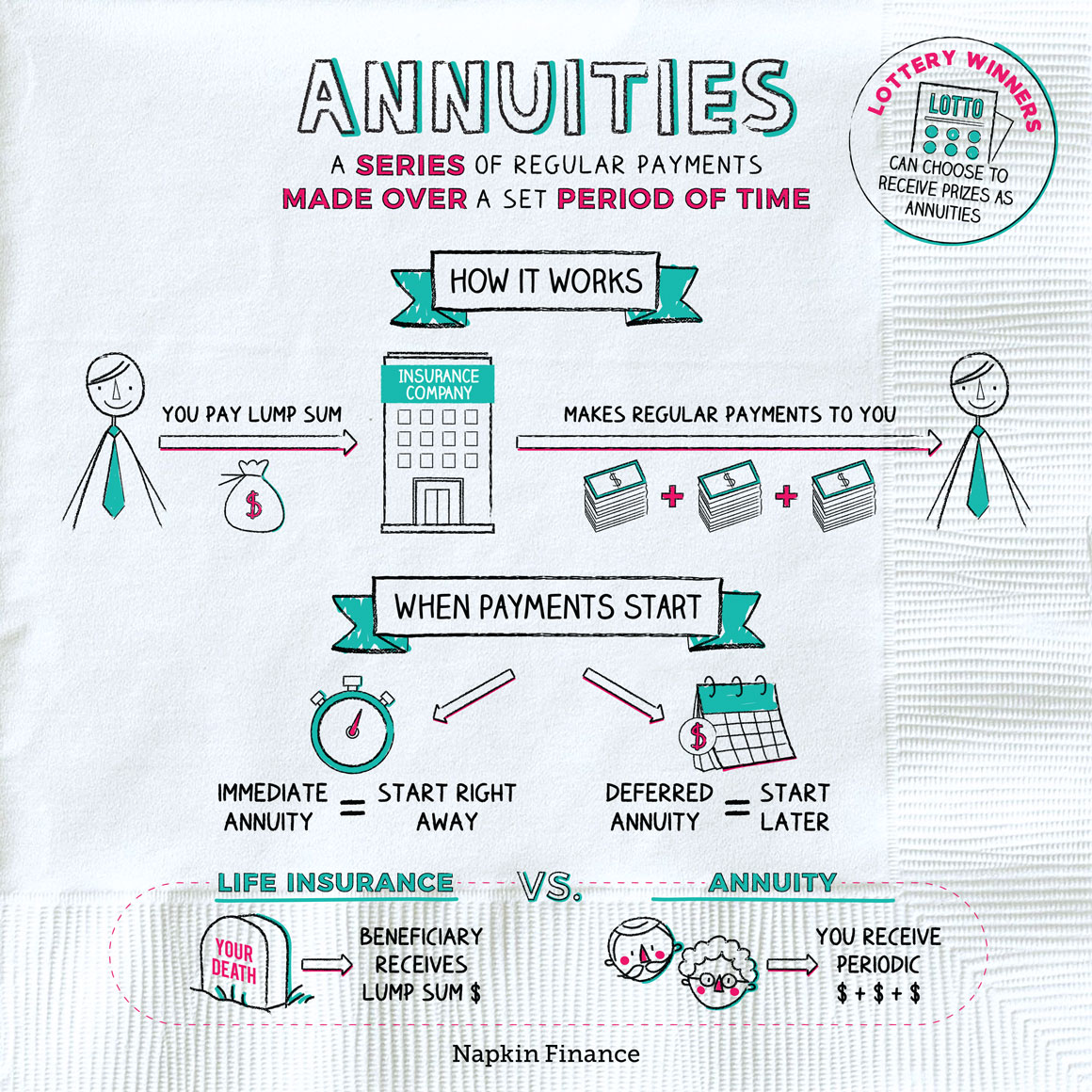All Categories
Featured
Table of Contents

Comprehending the various survivor benefit alternatives within your acquired annuity is very important. Very carefully examine the agreement information or talk to an economic expert to determine the specific terms and the finest method to wage your inheritance. As soon as you acquire an annuity, you have several choices for receiving the cash.
Sometimes, you may be able to roll the annuity right into an unique kind of private retirement account (INDIVIDUAL RETIREMENT ACCOUNT). You can select to obtain the entire continuing to be equilibrium of the annuity in a single settlement. This choice provides prompt accessibility to the funds but features significant tax effects.

If the inherited annuity is a certified annuity (that is, it's held within a tax-advantaged retired life account), you might be able to roll it over right into a brand-new retired life account. You don't require to pay taxes on the surrendered amount. Beneficiaries can roll funds into an inherited IRA, an unique account especially made to hold possessions inherited from a retirement plan.
Inheritance taxes on Annuity Fees
While you can't make additional payments to the account, an inherited Individual retirement account uses an important benefit: Tax-deferred growth. When you do take withdrawals, you'll report annuity earnings in the very same method the strategy participant would have reported it, according to the Internal revenue service.
This alternative gives a constant stream of earnings, which can be valuable for long-lasting financial preparation. Typically, you should begin taking distributions no more than one year after the proprietor's death.

As a beneficiary, you won't undergo the 10 percent IRS very early withdrawal fine if you're under age 59. Trying to calculate tax obligations on an acquired annuity can really feel complex, yet the core principle revolves around whether the contributed funds were formerly taxed.: These annuities are funded with after-tax dollars, so the recipient usually does not owe tax obligations on the original payments, but any earnings gathered within the account that are distributed are subject to regular earnings tax.
Taxes on inherited Immediate Annuities payouts
There are exceptions for partners who acquire qualified annuities. They can typically roll the funds right into their very own individual retirement account and delay tax obligations on future withdrawals. In any case, at the end of the year the annuity company will certainly file a Form 1099-R that reveals exactly how much, if any, of that tax obligation year's distribution is taxed.
These taxes target the deceased's total estate, not simply the annuity. Nevertheless, these tax obligations generally just impact large estates, so for many heirs, the emphasis needs to get on the income tax obligation effects of the annuity. Acquiring an annuity can be a complex however potentially financially helpful experience. Recognizing the terms of the agreement, your payment alternatives and any tax obligation ramifications is essential to making educated decisions.
Is there tax on inherited Annuity Contracts
Tax Obligation Therapy Upon Death The tax treatment of an annuity's fatality and survivor advantages is can be quite complicated. Upon a contractholder's (or annuitant's) death, the annuity may be subject to both revenue taxation and estate tax obligations. There are various tax obligation treatments depending upon who the recipient is, whether the proprietor annuitized the account, the payment approach picked by the beneficiary, and so on.
Estate Taxes The government inheritance tax is a highly dynamic tax (there are many tax braces, each with a higher rate) with rates as high as 55% for really large estates. Upon death, the IRS will certainly consist of all building over which the decedent had control at the time of death.
Any type of tax obligation in unwanted of the unified credit rating is due and payable 9 months after the decedent's fatality. The unified credit report will totally shelter reasonably moderate estates from this tax.
This discussion will certainly concentrate on the estate tax obligation treatment of annuities. As held true during the contractholder's life time, the internal revenue service makes an essential distinction in between annuities held by a decedent that remain in the buildup phase and those that have gone into the annuity (or payment) stage. If the annuity is in the accumulation phase, i.e., the decedent has actually not yet annuitized the agreement; the full fatality advantage ensured by the agreement (including any type of enhanced survivor benefit) will certainly be included in the taxed estate.
Taxes on inherited Annuity Income Riders payouts
Instance 1: Dorothy owned a repaired annuity contract released by ABC Annuity Business at the time of her fatality. When she annuitized the agreement twelve years earlier, she picked a life annuity with 15-year period specific. The annuity has actually been paying her $1,200 per month. Considering that the contract guarantees repayments for a minimum of 15 years, this leaves three years of payments to be made to her boy, Ron, her assigned beneficiary (Retirement annuities).

That worth will be consisted of in Dorothy's estate for tax obligation functions. Think instead, that Dorothy annuitized this contract 18 years earlier. At the time of her death she had actually outlived the 15-year period specific. Upon her fatality, the settlements stop-- there is nothing to be paid to Ron, so there is nothing to consist of in her estate.
Two years ago he annuitized the account picking a lifetime with cash refund payment choice, naming his child Cindy as recipient. At the time of his death, there was $40,000 major staying in the contract. XYZ will pay Cindy the $40,000 and Ed's executor will include that quantity on Ed's inheritance tax return.
Because Geraldine and Miles were married, the advantages payable to Geraldine represent property passing to an enduring partner. Flexible premium annuities. The estate will have the ability to make use of the endless marriage deduction to avoid taxes of these annuity benefits (the worth of the benefits will certainly be provided on the inheritance tax form, together with a balancing out marital reduction)
Single Premium Annuities inheritance and taxes explained
In this situation, Miles' estate would include the value of the remaining annuity repayments, however there would be no marriage reduction to balance out that inclusion. The very same would apply if this were Gerald and Miles, a same-sex pair. Please keep in mind that the annuity's staying value is determined at the time of death.

Annuity agreements can be either "annuitant-driven" or "owner-driven". These terms refer to whose death will certainly trigger payment of fatality benefits.
Yet there are circumstances in which one person owns the agreement, and the gauging life (the annuitant) is another person. It would behave to think that a specific contract is either owner-driven or annuitant-driven, but it is not that easy. All annuity contracts released since January 18, 1985 are owner-driven because no annuity agreements provided ever since will certainly be provided tax-deferred condition unless it consists of language that activates a payout upon the contractholder's fatality.
Table of Contents
Latest Posts
Analyzing Variable Annuity Vs Fixed Indexed Annuity A Comprehensive Guide to Annuities Variable Vs Fixed Breaking Down the Basics of Fixed Annuity Vs Equity-linked Variable Annuity Pros and Cons of Va
Analyzing Deferred Annuity Vs Variable Annuity Everything You Need to Know About Variable Annuity Vs Fixed Indexed Annuity What Is the Best Retirement Option? Features of Smart Investment Choices Why
Analyzing Choosing Between Fixed Annuity And Variable Annuity Key Insights on Your Financial Future What Is Fixed Vs Variable Annuities? Features of Indexed Annuity Vs Fixed Annuity Why Choosing the R
More
Latest Posts